I’m on a quest to catch a fish in each of the 50 U.S. states – and to use each adventure as a means to explore conservation, the latest fisheries research and our complicated connections to the natural world.
I’m weary from 9 hours of driving, but the red rock and spectacular rock formations lift my spirits. I’m here for a few days of hiking the Southern Utah canyon country with an old college buddy, and it looks like we’ll have unlimited trails to explore.
As I drive into Moab, Utah, it’s clear I’m not alone in this thinking. The town is abuzz with mountain bikers, national park tourists, RV’ers and off-road enthusiasts. All here to enjoy arches and slick rock, postcard-perfect vistas and breathtaking canyon views.
Even in this place, though, my thoughts are never far from fish.
After checking into my hotel, I grab a fishing rod and head to the nearby Colorado River. This water is home to some of the coolest fish species on the continent, including the Colorado pikeminnow, a predatory minnow that can reach 100 pounds in weight, and the razorback sucker, a fish with a distinctive humped back.
These two species as well as others like the humpback chub and bonytail are native only in the Colorado River and its tributaries. They’re desert gems, as special as the more famous canyons and arches nearby.
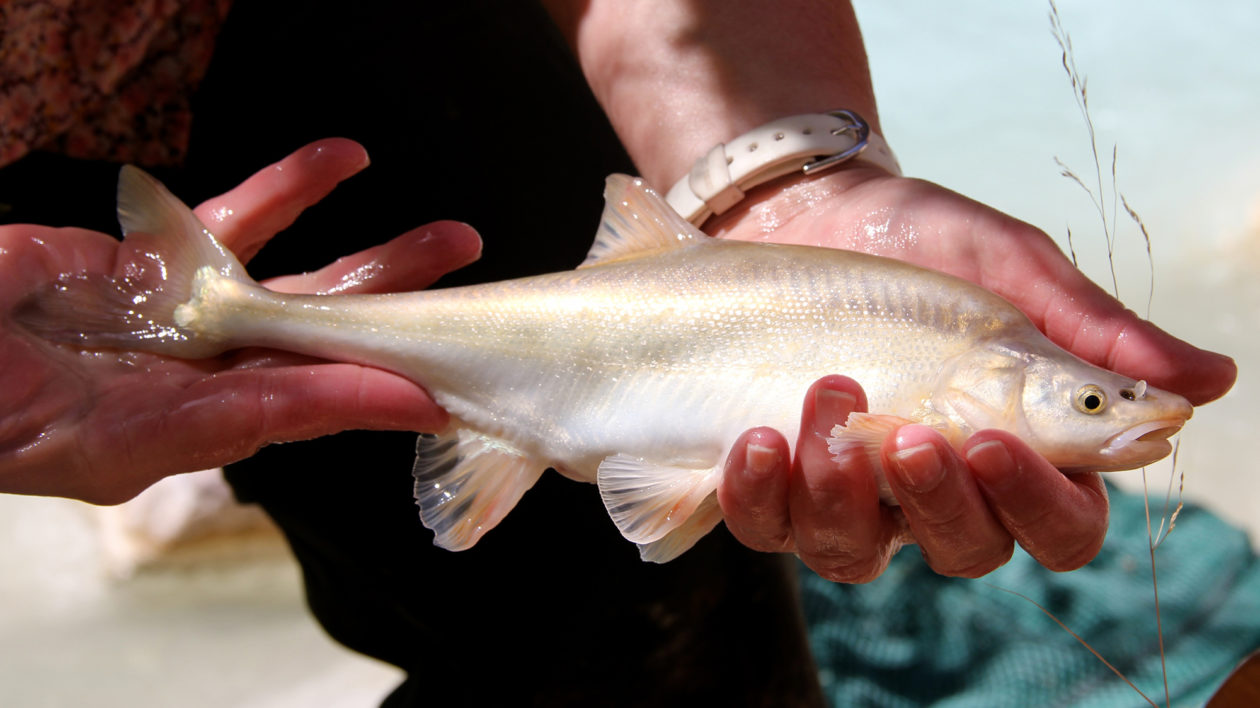
I cast into the Colorado. This is not a dramatic fish story. I start catching almost immediately. But these are not desert gems: I’m catching channel catfish and yellow bullhead, one after another. These are just two of 70 non-native fish that have been stocked into the Colorado, with devastating impacts on the native species. It’s clear the catfish and bullheads are absolutely thick here.
I’m always happy to catch a fish, but here I cannot deny that the catfish make me feel depressed. How can native fish have a chance in this swarm of predatory invasives?
It turns out that there’s a Nature Conservancy preserve just a short distance from here that is being designed to do just that: to give native razorback suckers a fighting chance.
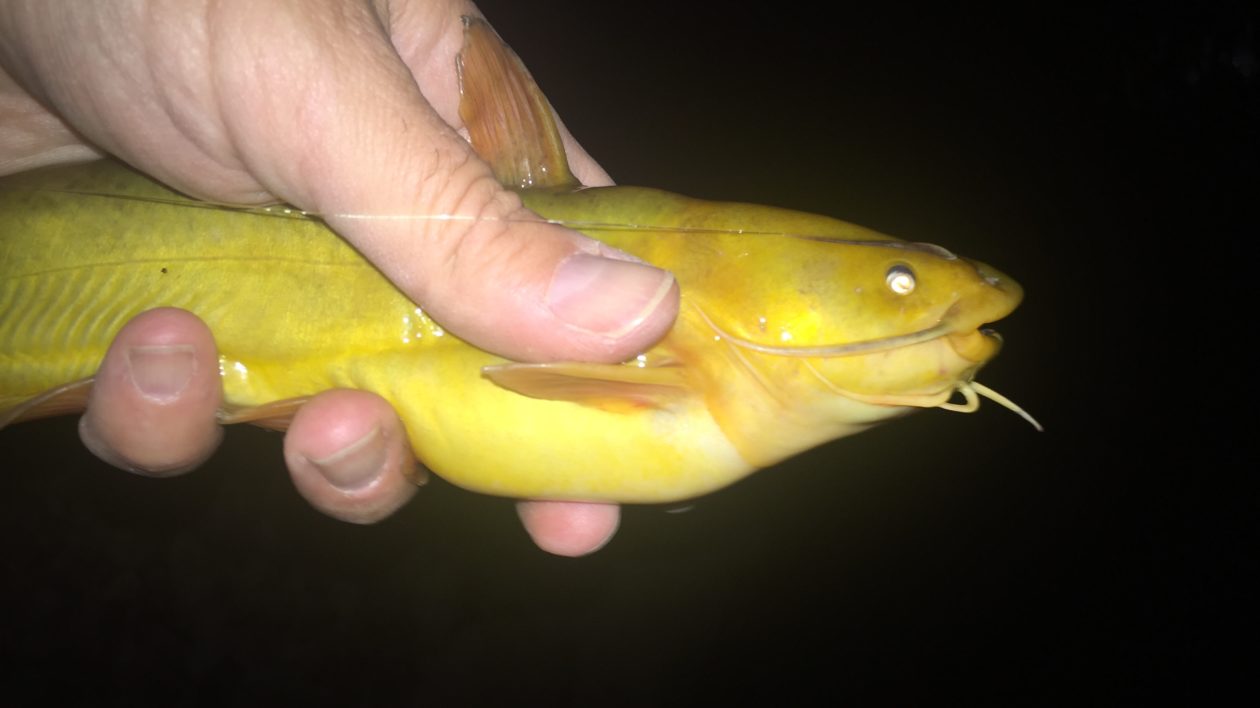
A Desert Oasis, A Desert Nursery
By the time I leave my hotel the next morning, there’s already a line of vehicles streaming towards Arches National Park. Every coffee shop in Moab has a line. I get in my car and inch down the main drag, then turn onto a side street. In minutes, I’m parked in the shade of trees at The Nature Conservancy’s Scott and Norma Matheson Wetlands Preserve.
I’ve only traveled a few blocks, but it feels like a world away from the t-shirt shops and bustle of downtown Moab. The 892-acre preserve also offers a desert oasis for wildlife. Migrant and resident birds flock to the riparian vegetation. Northern leopard frogs, beavers, river otters and other critters can be found. And now there’s a project to make this place a refuge for native razorback suckers, too.
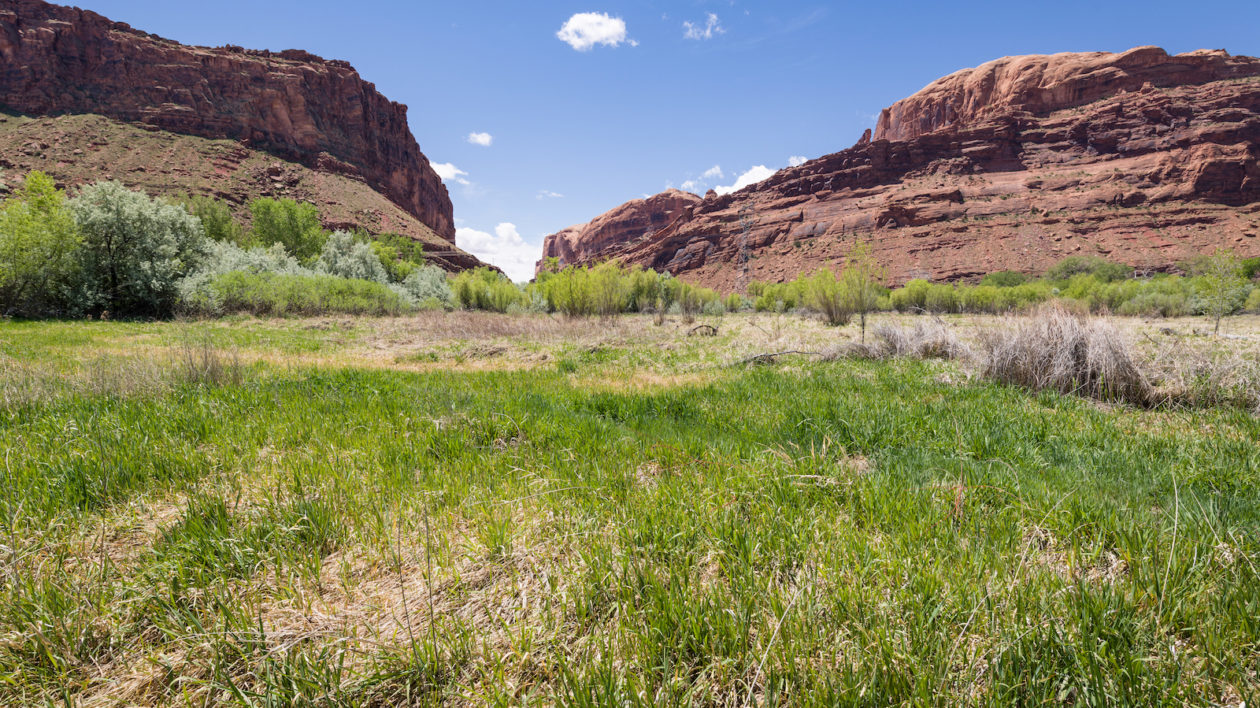
Native fish need all the help they can get. “The razorback sucker has been in the Colorado River for millions of years, but recently the river has changed significantly,” says Zach Ahrens, native aquatics biologist for the Utah Division of Wildlife Resources. “Dams on the Colorado have changed water flows. The suckers are faced with habitat degradation, changing river flows and temperature regimes and predation by invasive fish.”
Since the dams were established, the river is a completely different habitat. Four native fish, including razorback suckers, are on the Endangered Species List. Despite that, razorback suckers can indeed live there. Razorback suckers have been stocked in the Colorado and Green rivers since the 1990s. “The fish that are stocked are surviving and reproducing,” says Ahrens. “They can live for 40 years.”
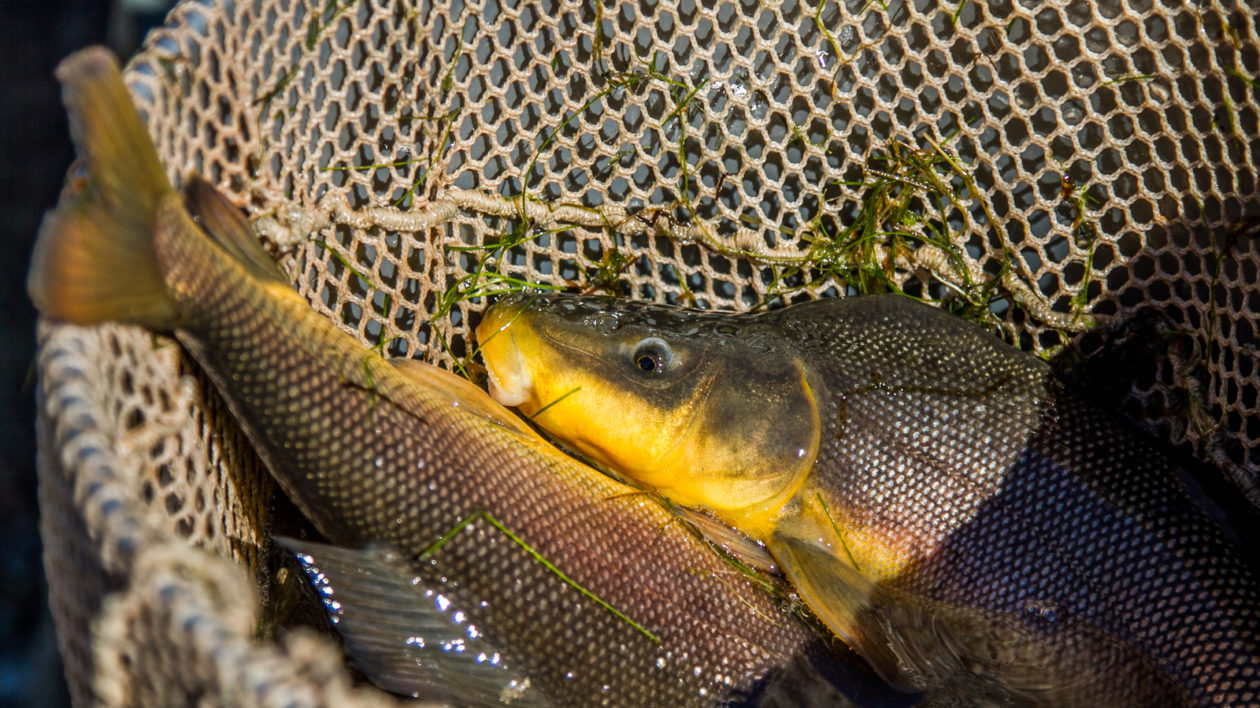
The fish have done so well that there is a proposal to downlist them from endangered to threatened. However, right now, keeping this population going means perpetual stocking. “The razorback suckers can reproduce, but the young are not surviving,” says Ahrens.
In part, that’s due to a lack of nursery habitat. With changing river flows, the sucker larvae don’t have the flooded river habitat they need to thrive. The other threat is invasive fish, as I experienced with the abundant catfish I caught on my first evening here.
“Sucker larvae are helpless as they float in the water column,” says Linda Whitham, manager of the preserve. “They look like little noodles with big black eyes.”
And if the sucker larvae are noodles, the catfish and green sunfish come to dine on a sucker-pasta buffet.
Several years ago, biologists monitoring native fish documented sucker larvae on the Colorado River shoreline of the preserve. An idea was hatched, so to speak, to provide sucker larvae what they need: wetland habitat and protection from predators. The Matheson Wetlands Preserve would become a razorback sucker nursery.
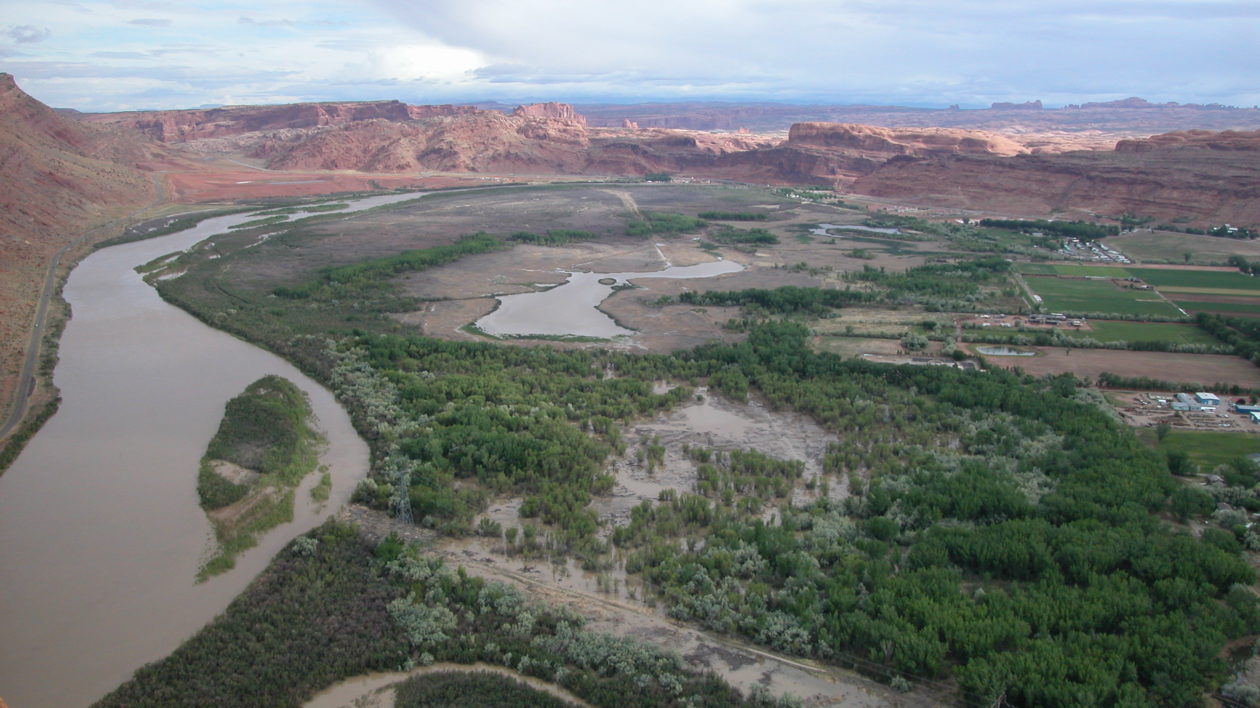
A Fighting Chance
Linda Whitham meets me at the preserve entrance, having already led an early-morning birding tour for Nature Conservancy members. We walk a nice trail back to the sucker nursery. We won’t be seeing fish today, but I want to see the place that could help sucker larvae survive.
If you’re setting up a nursery for your infant, you focus on comfort and safety. It’s pretty much the same for fish. The first step involved establishing a channel connecting the preserve to the Colorado River. Razorback suckers spawn near side channels and shallow parts of the river. When spring runoff raises river levels, the larvae travel up the channel.
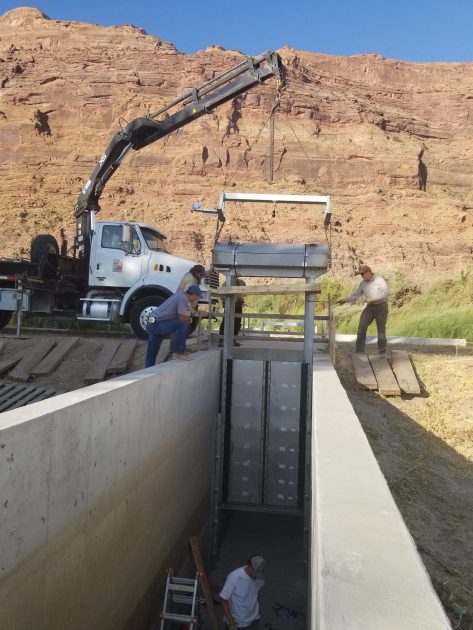
The channel gives larvae access to quality habitat, but that’s really only part of a solution. The other involves keeping out non-native predators. The nursery channel is equipped with gates and screens. The gates let water in when flows are high. The screens allow larvae to pass but not larger fish.
The larvae spend the summer in the nursery, growing. After three months – when the fish are big enough to evade predators – the screens and gates are opened. The fish can return to the Colorado River.
“We keep them safely tucked in the wetland until they grow,” says Whitham. “It gives them a fighting chance.”
Part of the preserve will be dredged to provide more wetland area. Fresh water will be pumped in to keep conditions viable, and water quality will be monitored throughout the summer.
When the larvae return to the river, the wetland is drained to ensure no non-native fish are lurking. The engineering allows managers to control the flow of the water, drying it up if invasive species are detected.
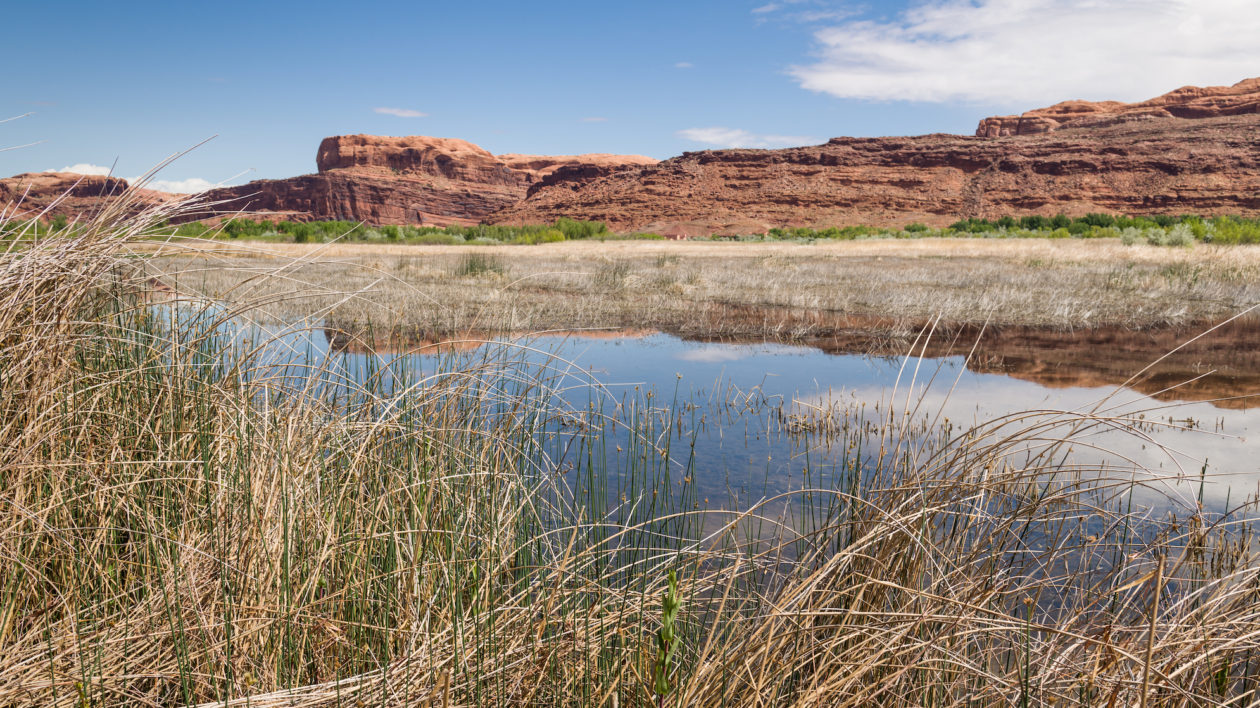
“The nursery can also be used by the three other native fish species,” says Whitham. “And it benefits native habitat. The flush of river water brings in soil and seeds.”
As we walk, we come to the gate, an engineered solution to protect a fish that has swam here for millions of years.
“The goal is ultimately for minimal involvement,” says Ahrens. “This is designed to mimic a natural process.”
While the fish larvae aren’t there, we do see a number of northern leopard frogs, another native species that has been threatened by invasives (in this case, non-native and highly predatory bullfrogs). I may not see the fish, but I can’t help but feel that efforts like this can make a big difference for native species. After all, full-grown razorbacks are surviving and breeding right here, right now.
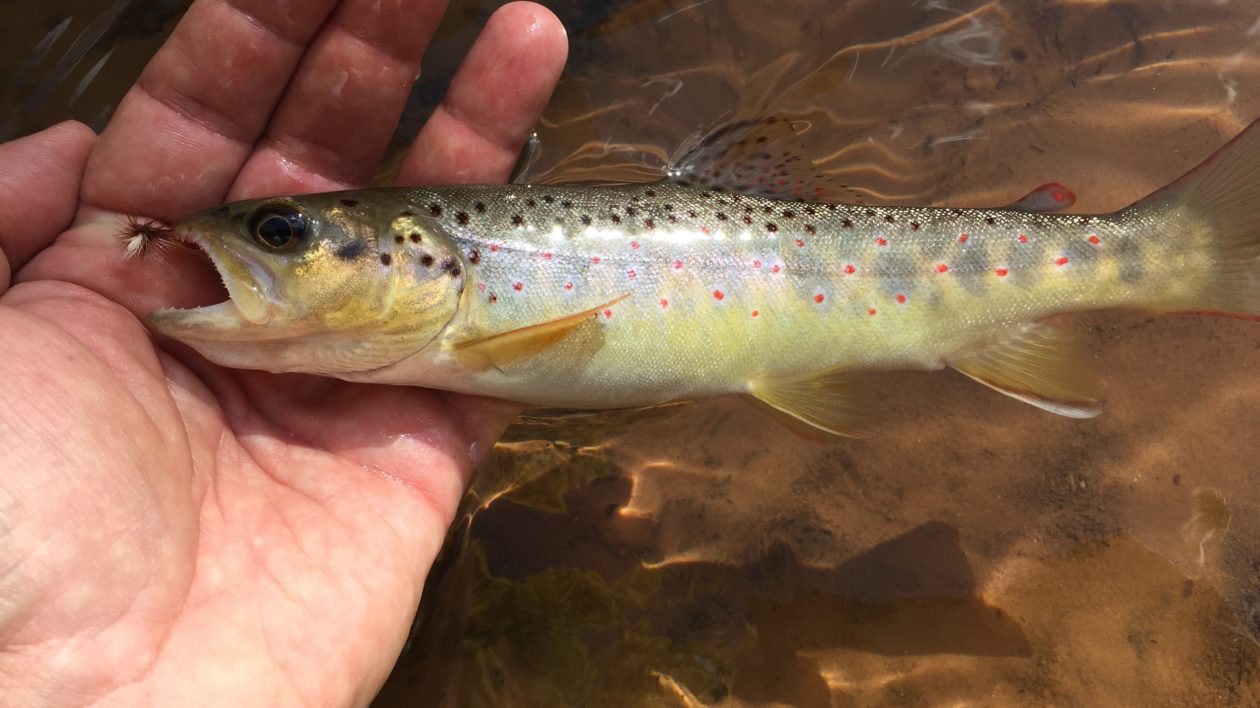
A Passion for Suckers
There’s one issue that circles through my mind: Can there be a constituency who has a passion for these native fish? I am standing in a region that draws international visitors for its natural beauty and outdoor recreation. Lots of visitors come to this preserve for the express purpose of seeing birds.
But razorback suckers?
“Not everyone cozies up to native fish,” says Whitham. She pauses, then adds. “We always are trying to build our case. Conservation is often costly.”
My love of fishing is one of the reasons I’m a conservationist. But I also acknowledge that too often anglers value so-called “game fish” – even when those species are invasive – over species they unfairly consider undesirable. Suckers often get a bad rap. Many of the invasives that gobble up sucker larvae were put here for sport purposes.
Still, there are signs of change. There are growing communities of anglers who recognize suckers as great game fish, and others who keep life lists of new species and new experiences. (I happen to be both). A Colorado River sport fishery for native species could build a constituency, drawn here for the unique adventure of pursuing wickedly cool fish.
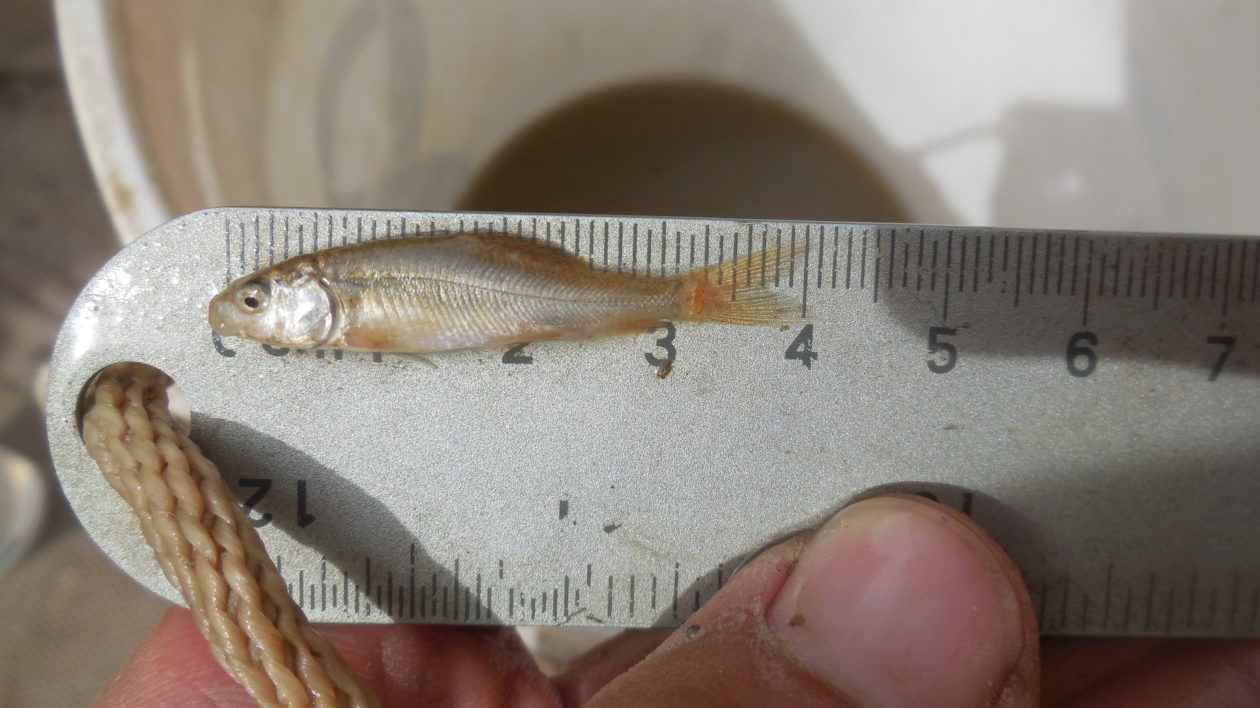
Right now, all four of the endemic species are endangered. But native fish like the greenback cutthroat trout and Gila trout have been downlisted so that limited catch-and-release fisheries could be established. Those angling opportunities build a lot of conservation support. I’ve fished for both. I dream of doing the same for razorback sucker and Colorado pikeminnow.
I’m not alone. Signs along the Colorado and Green rivers ask anglers to keep non-native game fish and safely release natives. And anglers are posting photos of incidentally catching (and releasing) the natives, generating a lot of social media attention.
“I see value in those photos,” says Ahrens. “It shows there can be excitement for fish that aren’t traditional game species. It could create a constituency. This nursery is another way to get the word out about how special these fish are.”
Both conservation and fishing require patience and hope. I know this is a project I’ll follow through the years. I await the day I see a razorback sucker. And yes, the day I can pursue one with a fishing rod. I hope others feel that same excitement, and support projects to restore the special native fish of the Colorado River.
“The razorback sucker has been a part of these waters for millions of years,” says Ahrens. “I hope more people appreciate how important it is. It is part of our natural heritage of the American West.”
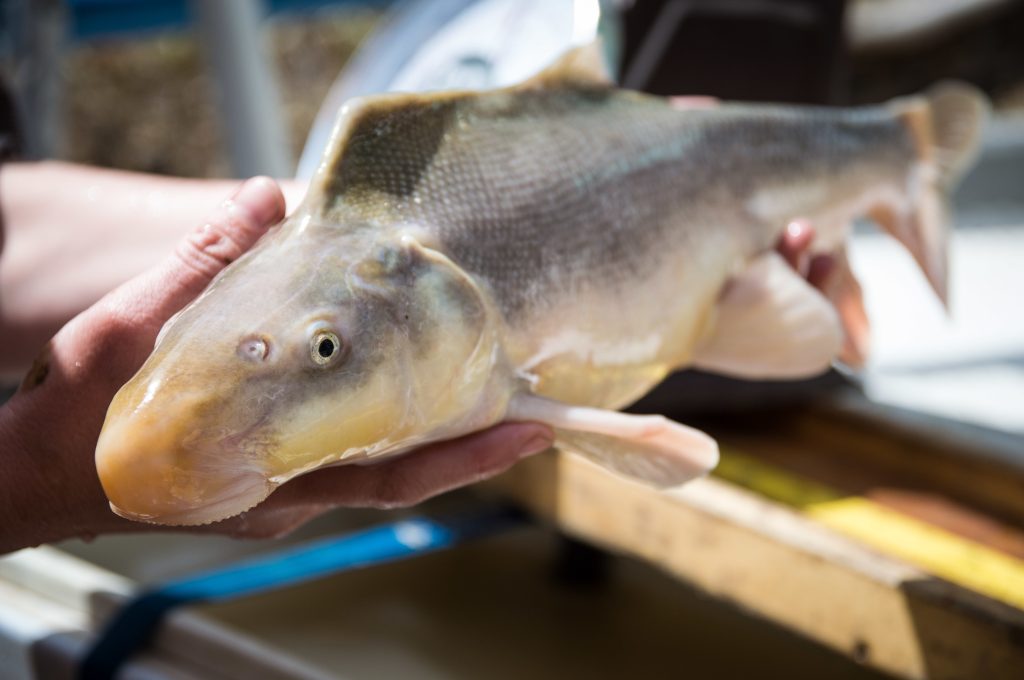



When you fish Ohio, consider the one of a kind Ohio Brook Trout in Geauga County. No angling allowed, you will have to have a guide and can only net them for immediate release.
Great article on the plight of native fish in the Colorado River.
Thanks for giving this issue attention.
Cheers